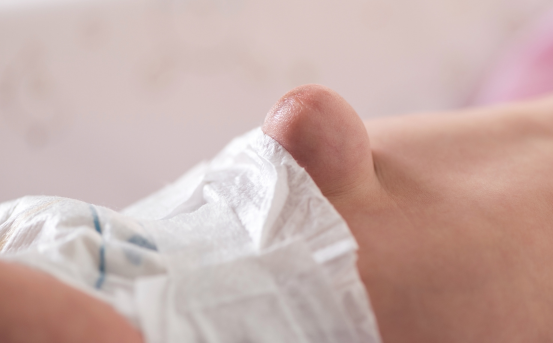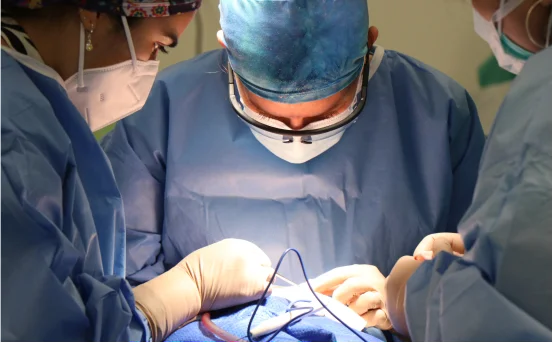Inguinal hernia repair surgery is one of the most common surgical procedures performed worldwide. It aims to correct an inguinal hernia a condition where a portion of tissue, usually the intestine, bulges through a weak spot in the abdominal muscles, typically in the groin area. This condition can cause pain, discomfort, and complications if left untreated.
An inguinal hernia occurs when soft tissue, often part of the intestine, pushes through a weak spot or tear in the lower abdominal wall. This creates a visible and often painful bulge in the groin area. It can happen to anyone, but it’s especially common in men, older adults, and individuals who do a lot of heavy lifting or have a history of chronic coughing or constipation.
What is Inguinal Hernia Repair Surgery?
An inguinal hernia occurs when tissue pushes through a weak spot in the inguinal canal, a passage in the lower abdominal wall. There are two types :-
-
Indirect inguinal hernia :- Common in infants and children due to a congenital defect.
-
Direct inguinal hernia :- More common in adults, often caused by weakened abdominal muscles due to age, heavy lifting, or straining.
Symptoms of Inguinal Hernia
-
A noticeable bulge in the groin or scrotum
-
Pain or discomfort, especially when bending, coughing, or lifting
-
A feeling of heaviness or dragging in the groin
-
Swelling around the testicles in men
If untreated, inguinal hernias may lead to complications such as strangulation, where the blood supply to the herniated tissue is cut off. This is a medical emergency.
What is Inguinal Hernia Repair Surgery?
Inguinal hernia repair surgery is a procedure to push the herniated tissue back into place and strengthen the weakened area. It is also known as herniorrhaphy or hernioplasty (if mesh is used).
There are two primary surgical methods :-
-
Open Hernia Repair (Herniorrhaphy)
In open surgery, a single long incision is made in the groin area. The surgeon pushes the herniated tissue back into the abdomen and repairs the weakened area, often reinforcing it with a synthetic mesh.
-
Laparoscopic Hernia Repair
This minimally invasive method uses several small incisions and a laparoscope (a thin tube with a camera). The surgeon uses surgical instruments to repair the hernia with the help of mesh. Laparoscopic surgery typically results in less postoperative pain and a quicker recovery.
Why is Inguinal Hernia Repair Surgery Needed?
While small, painless hernias can sometimes be monitored, surgery is often recommended for the following reasons :-
-
Persistent or worsening pain
-
Increased size of the hernia
-
Restriction of daily activities
-
Risk of strangulation or obstruction
-
Inability to reduce the hernia manually
Timely surgical intervention helps avoid life-threatening complications.
Preparing for Inguinal Hernia Surgery
Before undergoing hernia repair surgery, the doctor may recommend :-
-
Medical evaluation :- Blood tests, imaging, and physical examination.
-
Fasting :- Usually required for 6–8 hours before surgery.
-
Medication review :- Inform your doctor about all medications, including blood thinners.
Your healthcare provider will guide you on what to avoid before surgery and any preoperative instructions.
The Procedure: What to Expect?
Inguinal hernia repair surgery is usually performed under general or local anesthesia and typically takes about 30 to 60 minutes. Here’s what happens during the surgery :-
-
Anesthesia is administered to keep you comfortable or asleep during the procedure.
-
Incision or access points are made (open or laparoscopic approach).
-
The hernia sac is identified and the protruding tissue is gently pushed back.
-
Mesh reinforcement is placed over the weakened area for added strength.
-
Incisions are closed using sutures or staples.
-
Recovery begins in the postoperative area.
Most patients can go home the same day, especially if the procedure is laparoscopic.
Recovery After Inguinal Hernia Repair
Recovery times vary depending on the type of surgery and the individual. Here’s a general timeline :-
Day 1–3 :-
-
Mild to moderate pain or discomfort
-
Swelling or bruising in the groin
-
Prescribed pain medication helps manage discomfort
-
Light walking is encouraged to promote circulation
Week 1–2 :-
-
Return to light activities
-
Avoid lifting heavy objects
-
Follow-up visit with your surgeon
Week 3–6 :-
-
Gradual return to work or normal routine
-
Driving and light exercises may be resumed
-
Laparoscopic patients often recover faster
After 6 Weeks :-
-
Full physical activity can usually be resumed
-
Healing is generally complete
Always follow your doctor’s post-operative care instructions closely for the best outcomes.
Potential Risks and Complications
Inguinal hernia repair surgery is considered safe and effective. However, like any surgery, there are potential risks :-
-
Infection at the incision site
-
Bleeding or hematoma
-
Chronic groin pain or nerve damage
-
Recurrence of the hernia
-
Reaction to anesthesia
-
Seroma (fluid buildup)
Choosing a skilled surgeon and adhering to postoperative care helps minimize these risks.
Life After Hernia Repair Surgery
Most patients recover well and enjoy a significant improvement in quality of life. To prevent recurrence :-
-
Maintain a healthy weight
-
Avoid heavy lifting for a few months
-
Eat a high-fiber diet to avoid constipation and straining
-
Strengthen abdominal muscles gradually with exercises recommended by your doctor
If you experience persistent pain, swelling, or signs of infection, consult your doctor immediately.
Conclusion
Inguinal hernia repair surgery is a safe, effective, and commonly performed procedure that provides long-term relief from pain and prevents complications. Whether you choose open or laparoscopic surgery, early treatment ensures faster recovery and reduces the risk of hernia-related problems.























